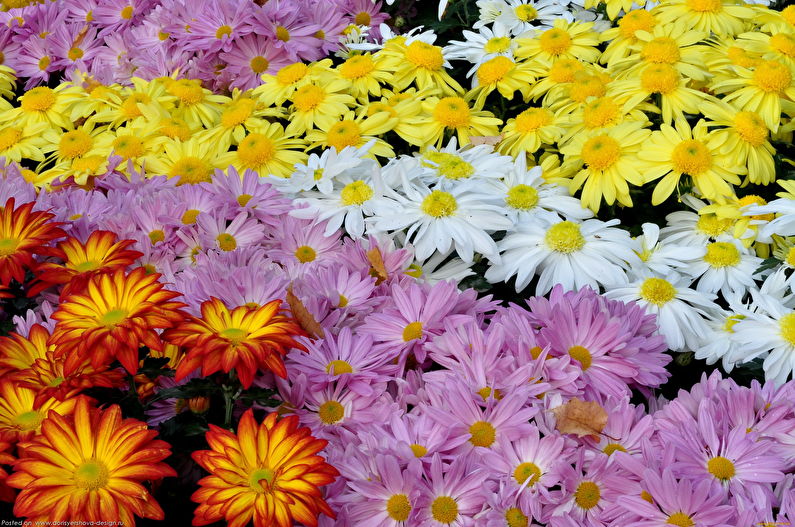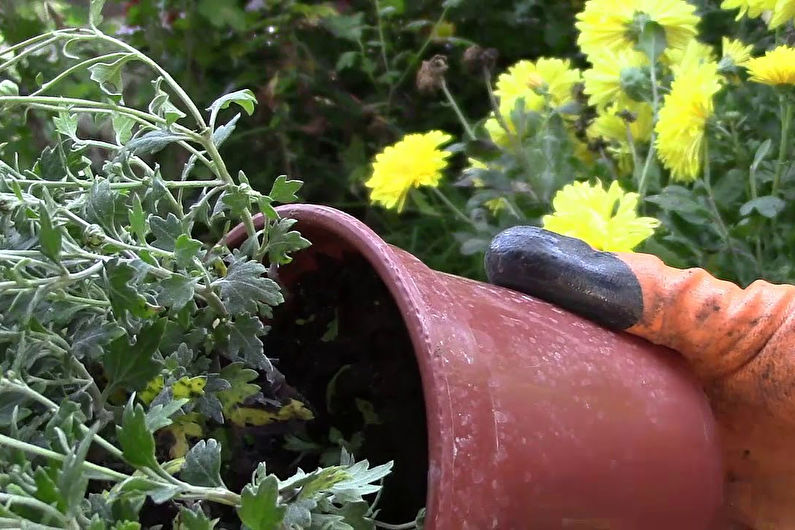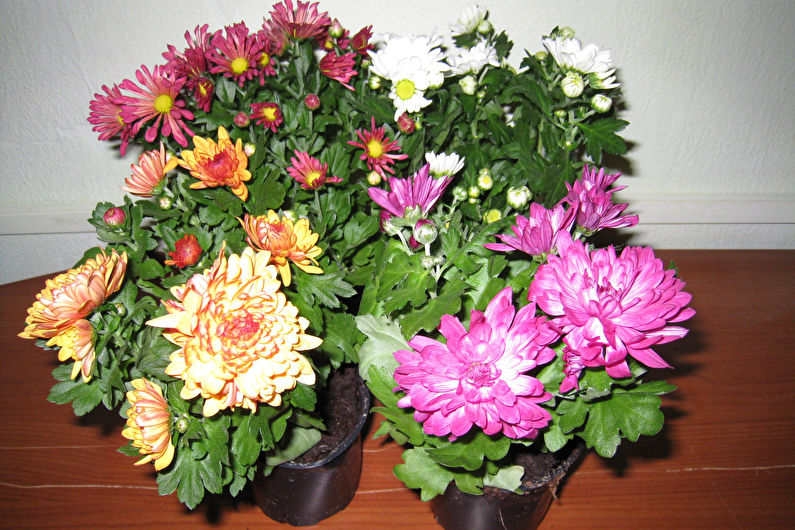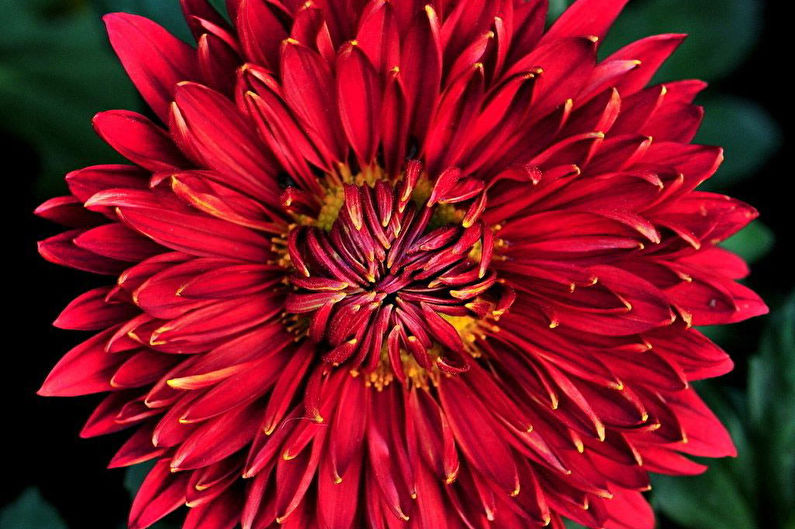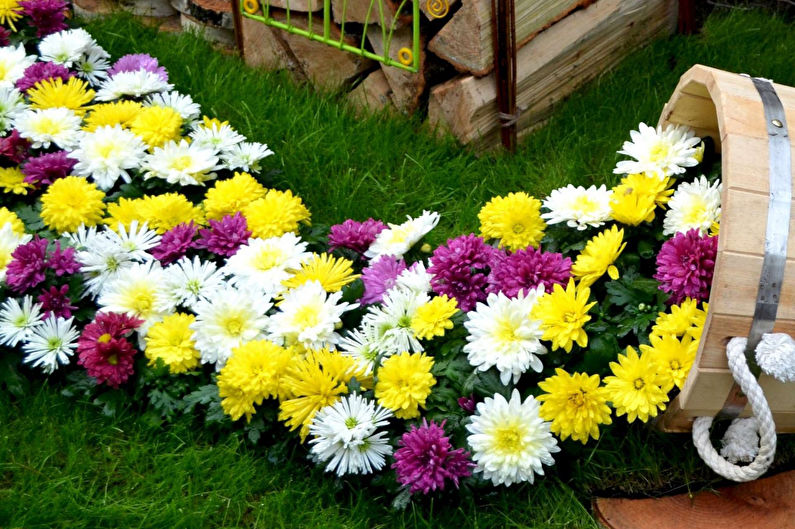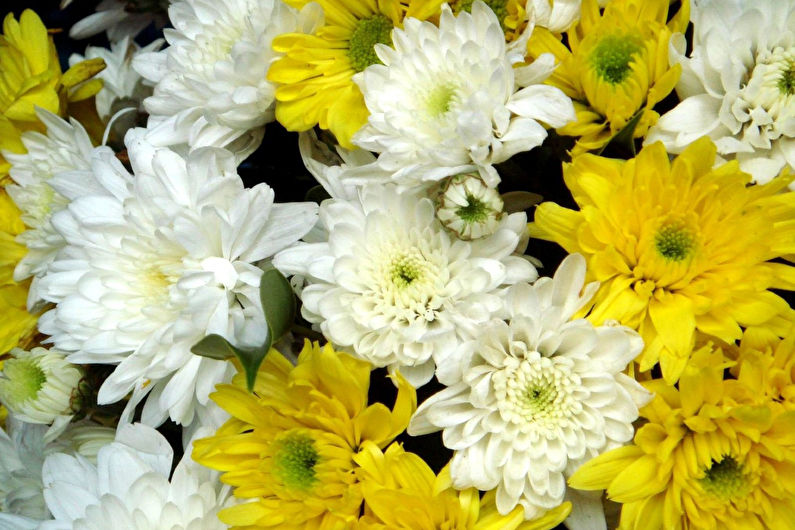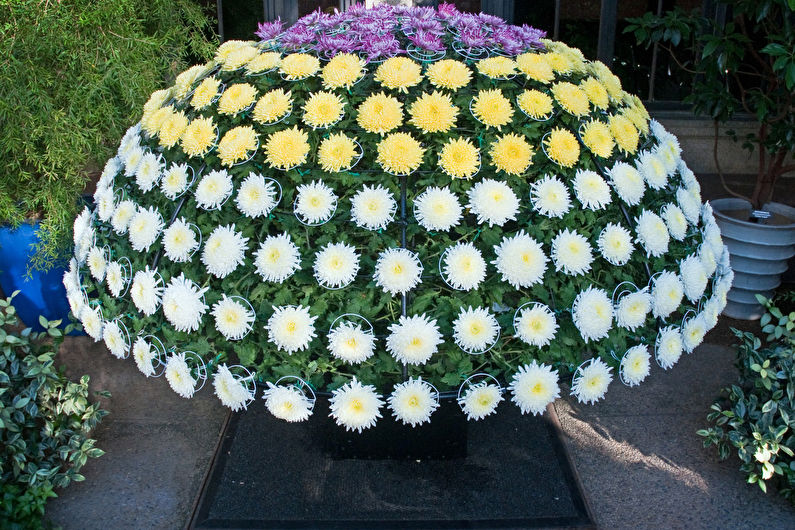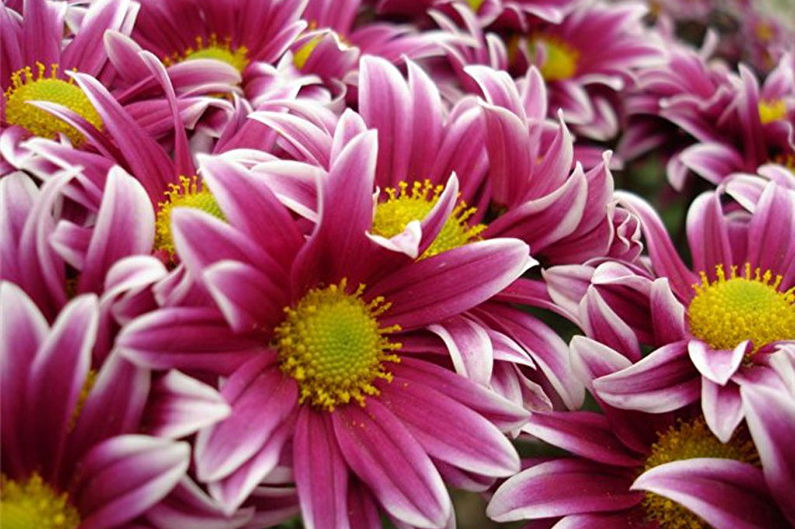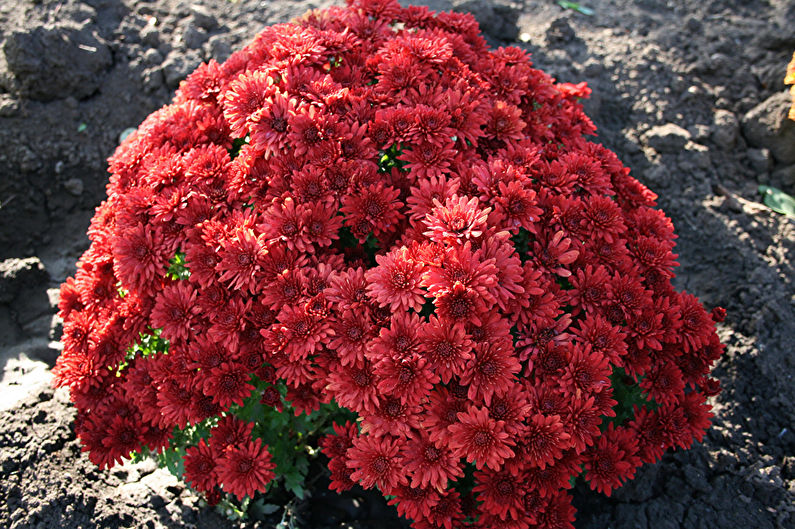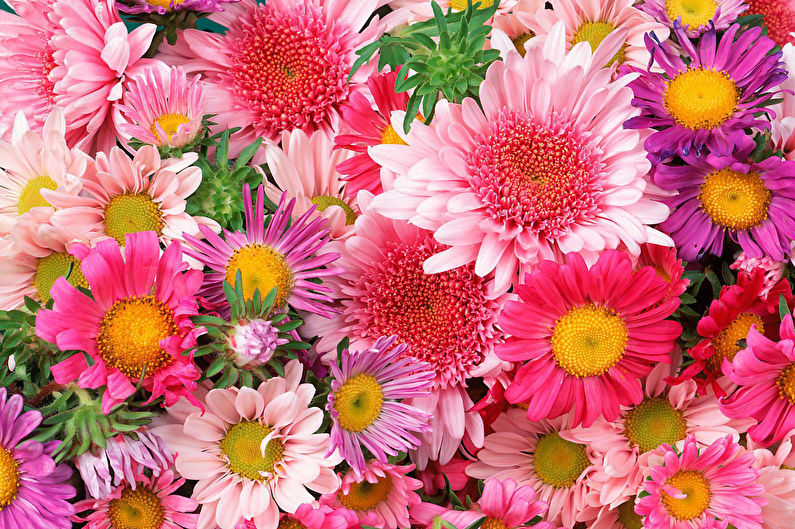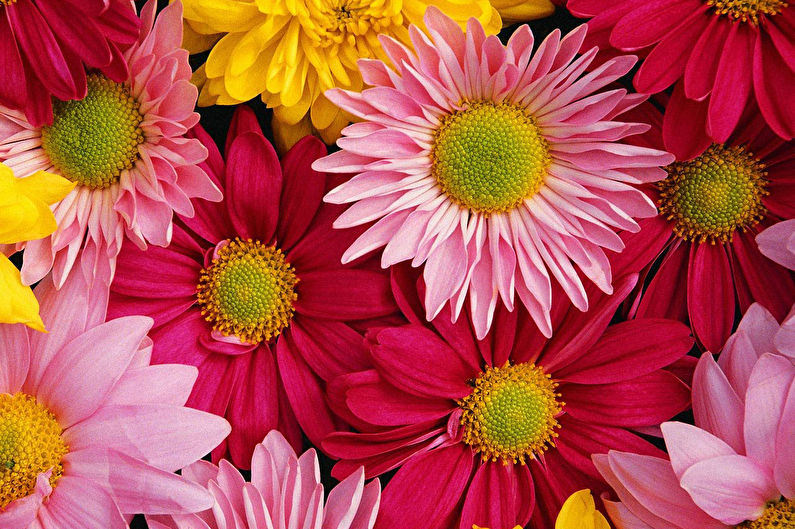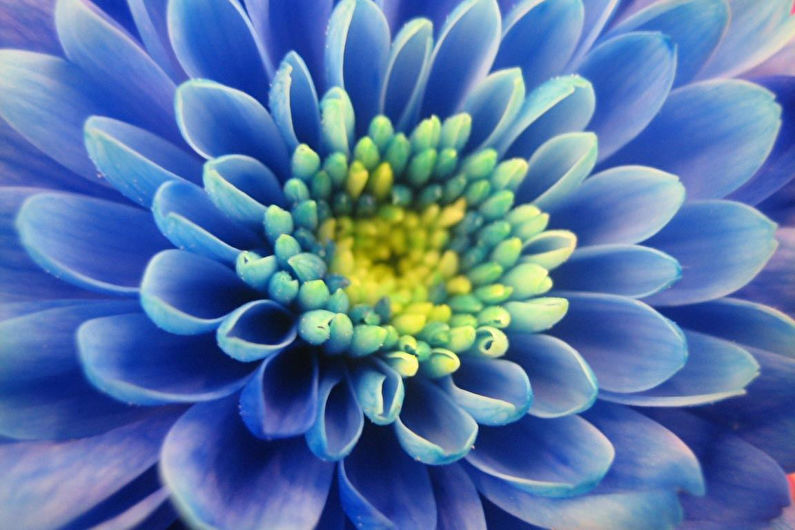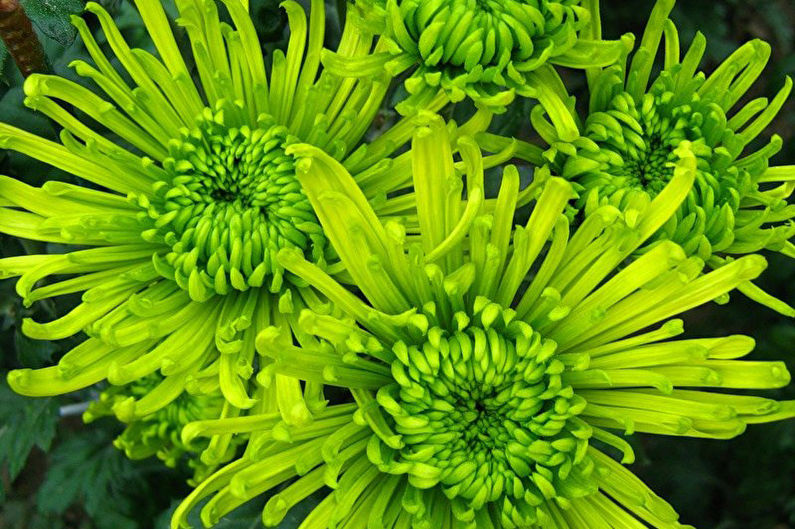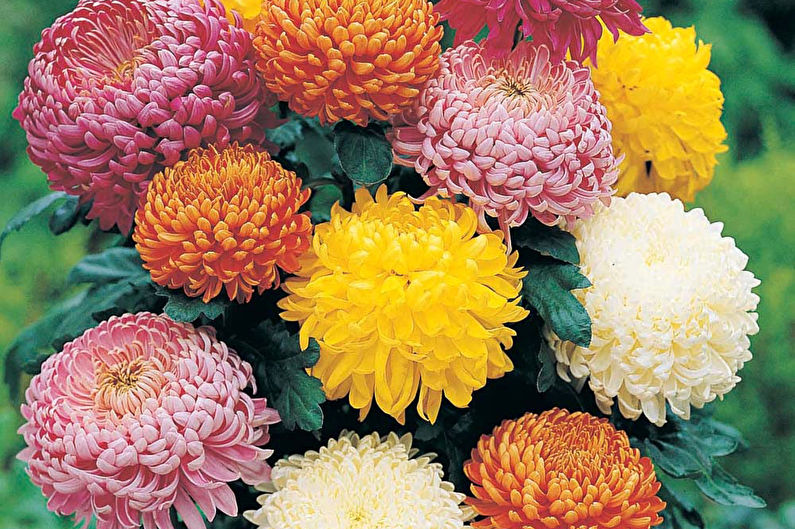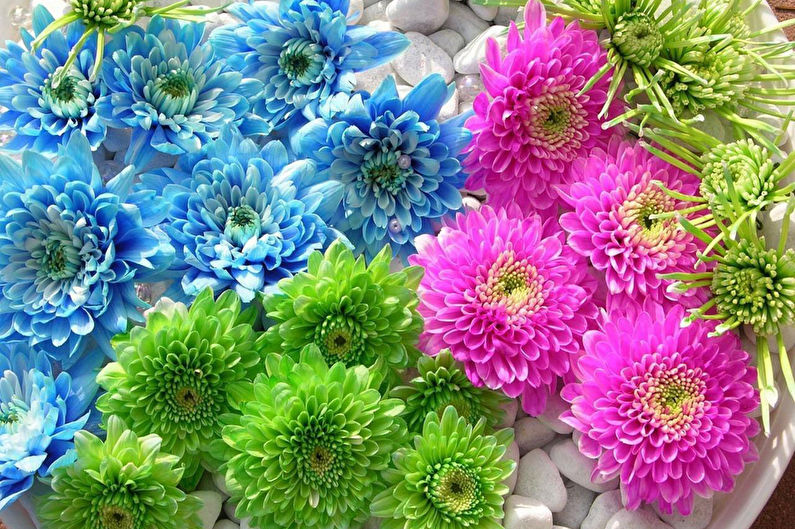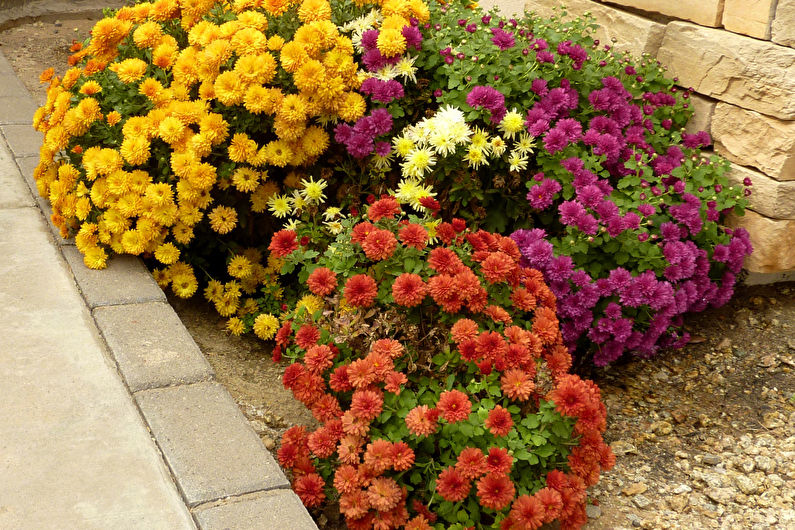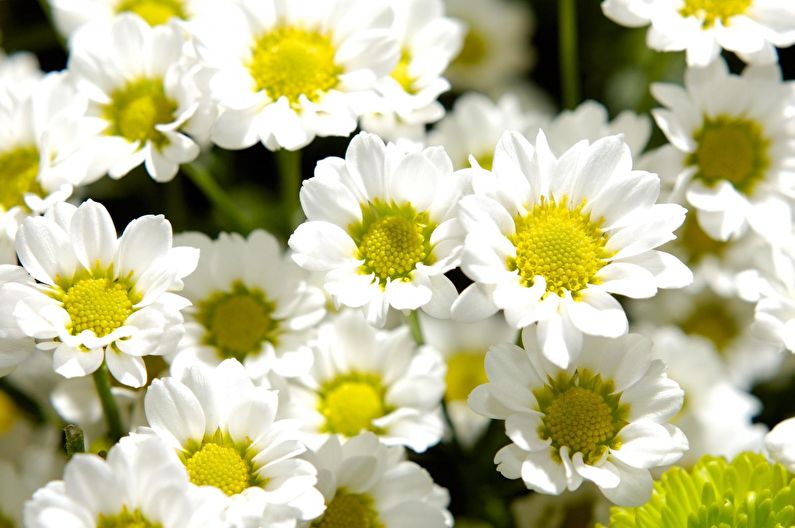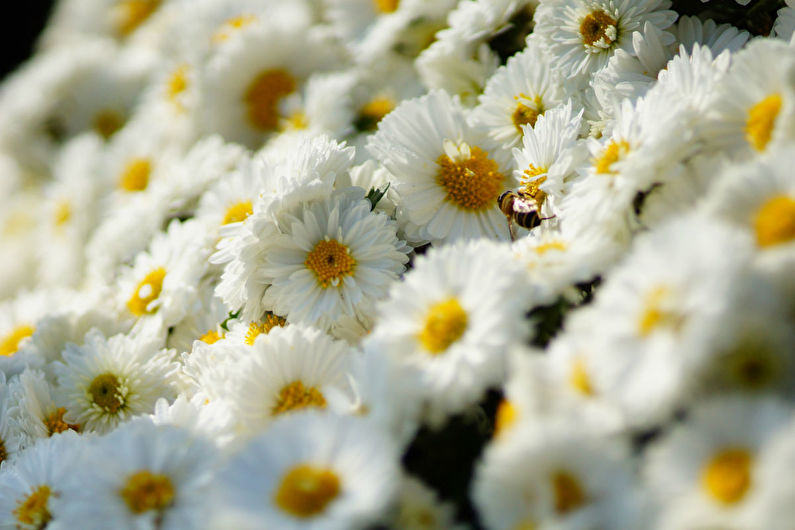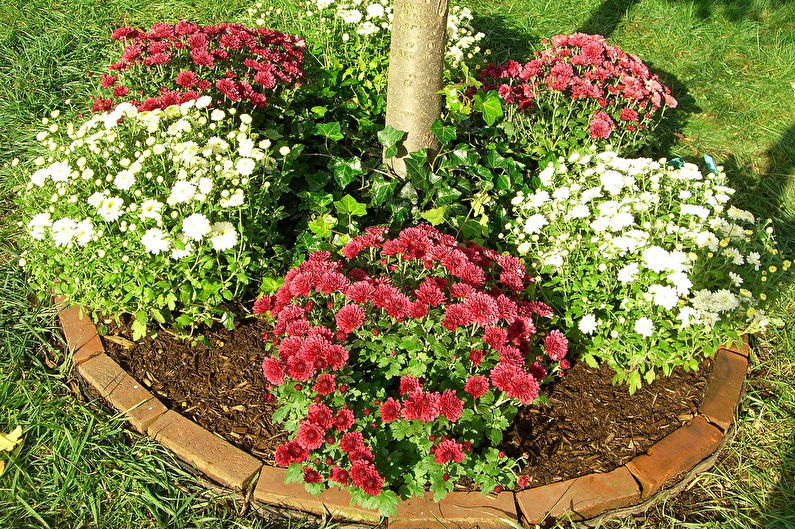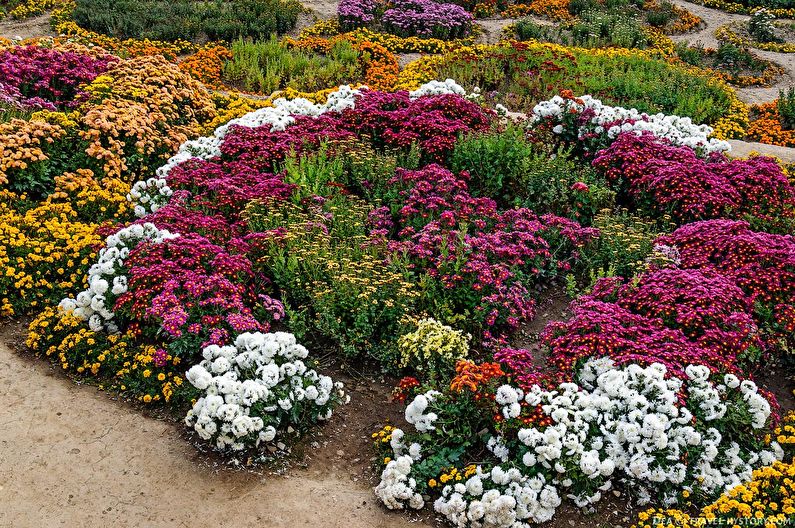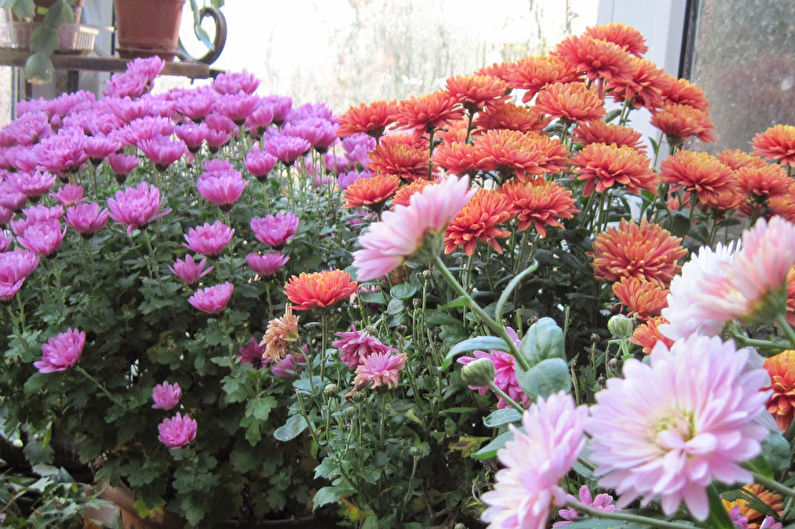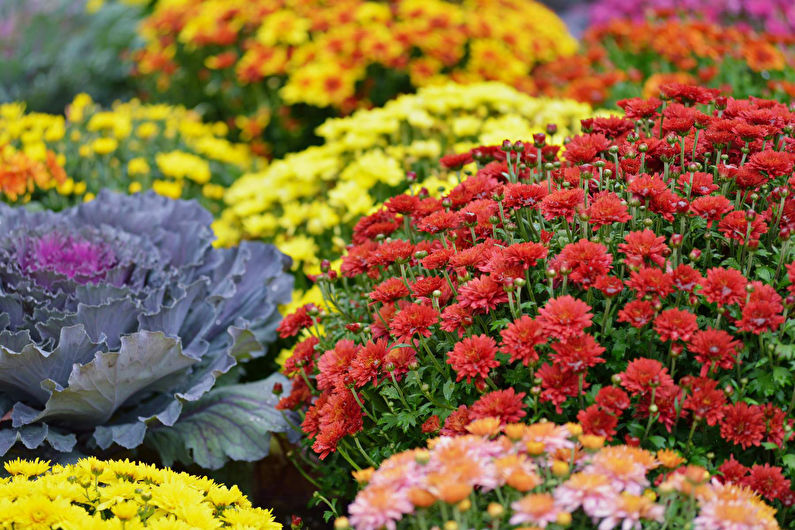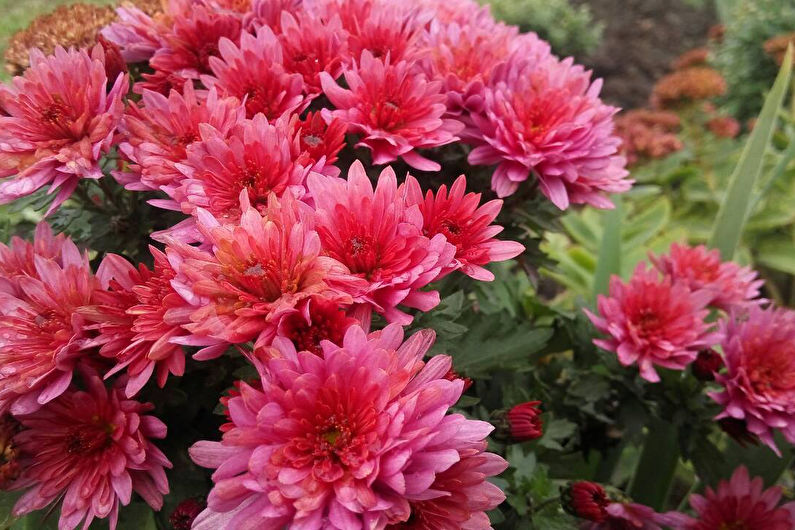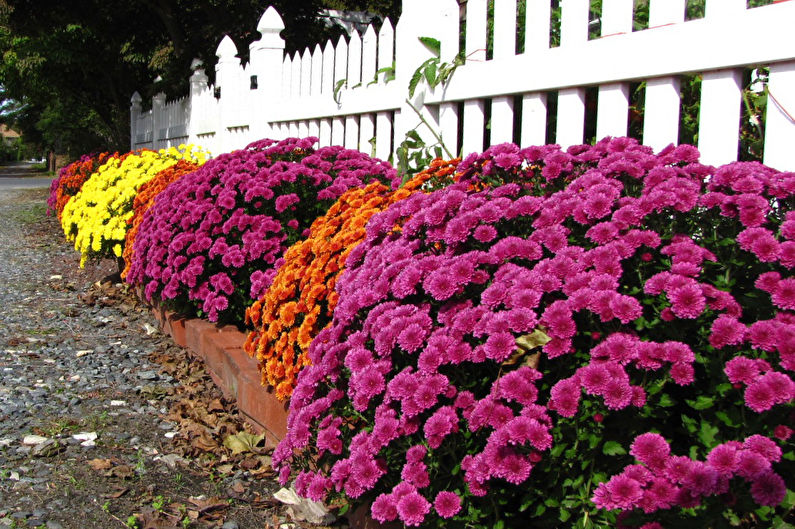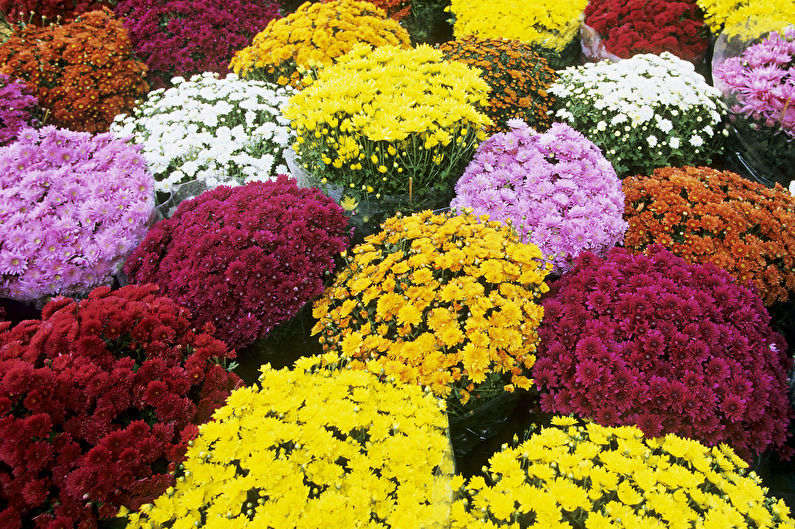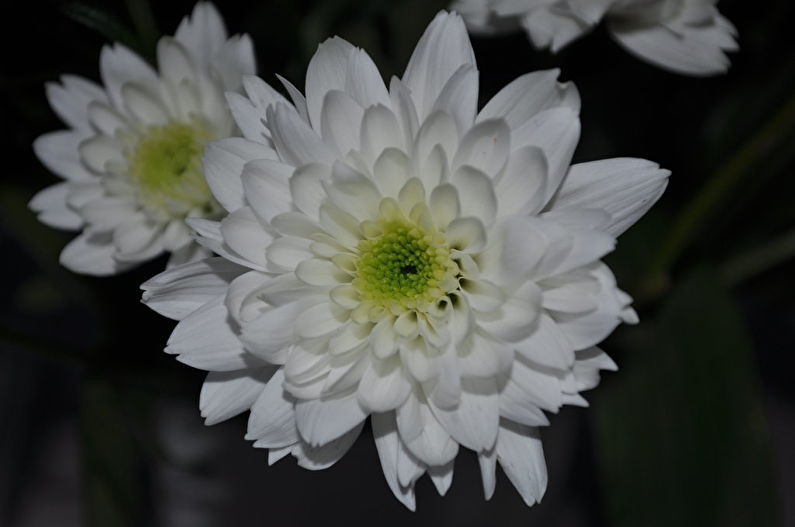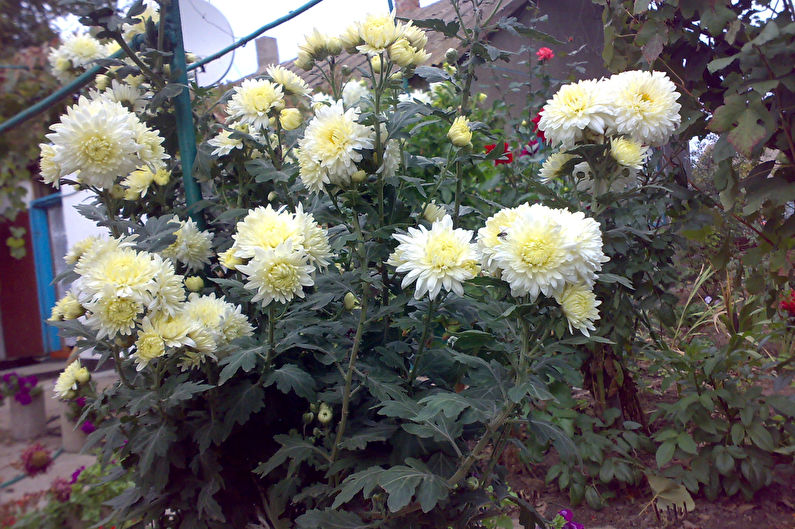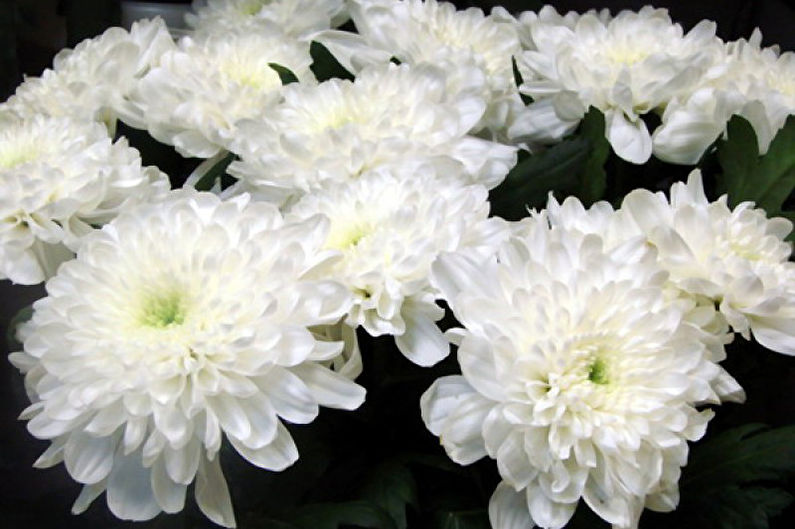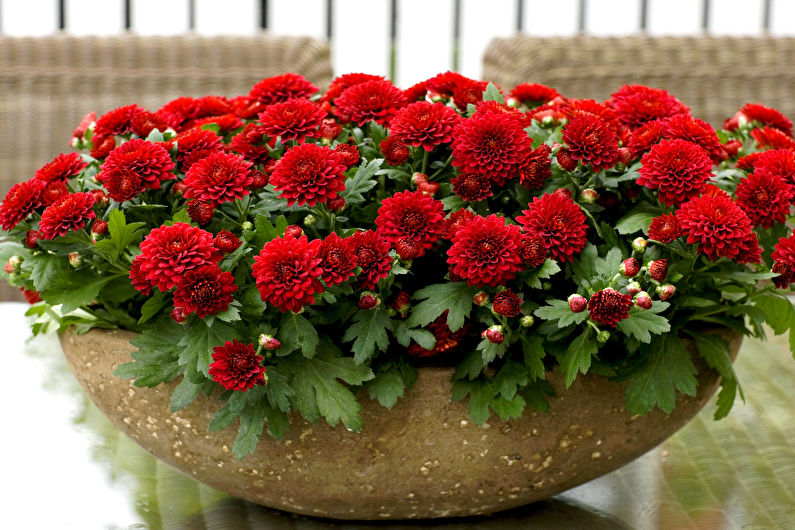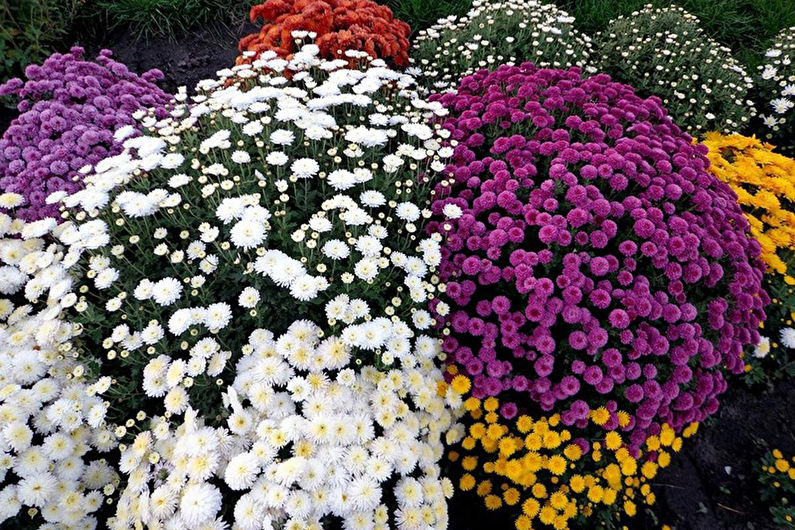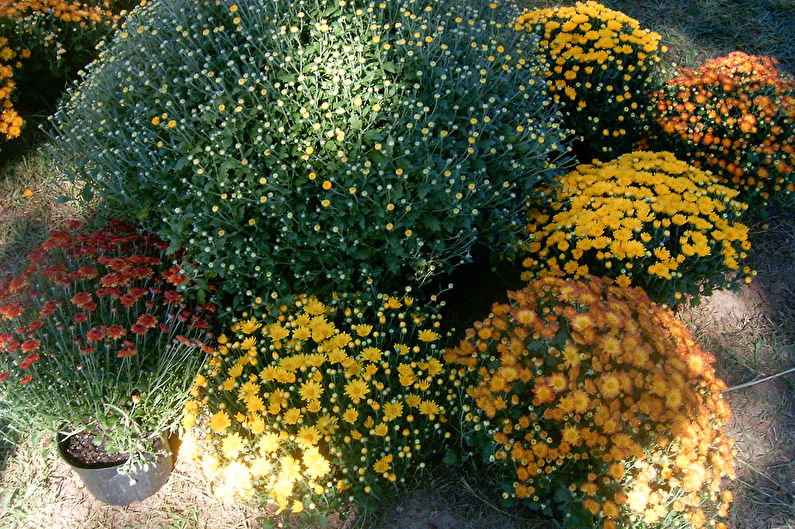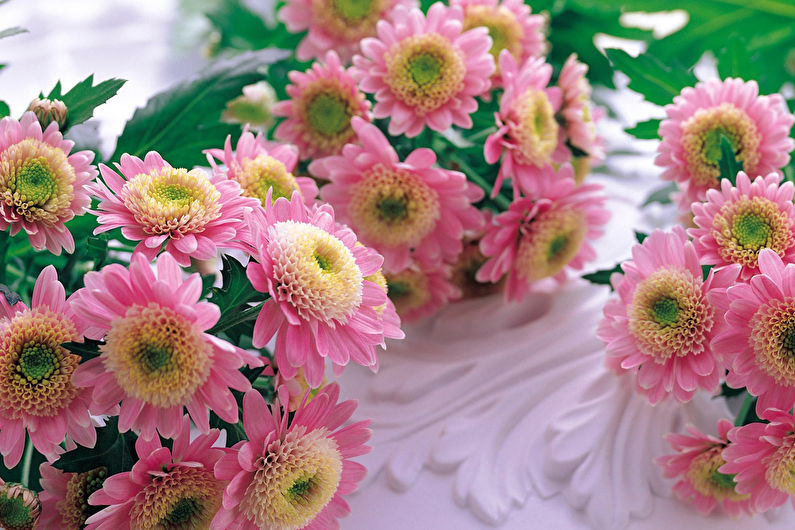
Chrysanthemums rightfully occupy the most prominent place in the collection of autumn flowers. Their bright inflorescences adorn gardens and flower beds until the first frosts, drawing everyone's attention to the perfection of forms and a variety of shades. Some species resemble chamomiles, others are striking in their resemblance to dahlias, asters, anemones. Due to resistance to cold and unpretentiousness in leaving, chrysanthemums easily take root in areas and delight owners with their amazing beauty.
Plant history
China is considered the original homeland of chrysanthemums - they were grown there already in the 1st millennium BC, mainly for eating. The plant was greatly respected in Japan - from the 12th century, by the will of Emperor Go-Toba, the drawing of a yellow 16-petal flower became the main state symbol, which is still used as the unofficial coat of arms of the Land of the Rising Sun. And when in 1889 the sign was approved as an imperial seal, the Japanese monarchy even began to be denoted by the phrase "Chrysanthemum Throne."
In the XVI century, during the active trade and colonization of Asia, chrysanthemums spread throughout Europe, and in the middle of the XIX century were brought into the territory of the Russian Empire. The name Chrysanthemum in Greek means “golden-eyed”, because it was yellow flowers with petals that resemble daisies that prevailed in nature before botanists began to create hybrids.
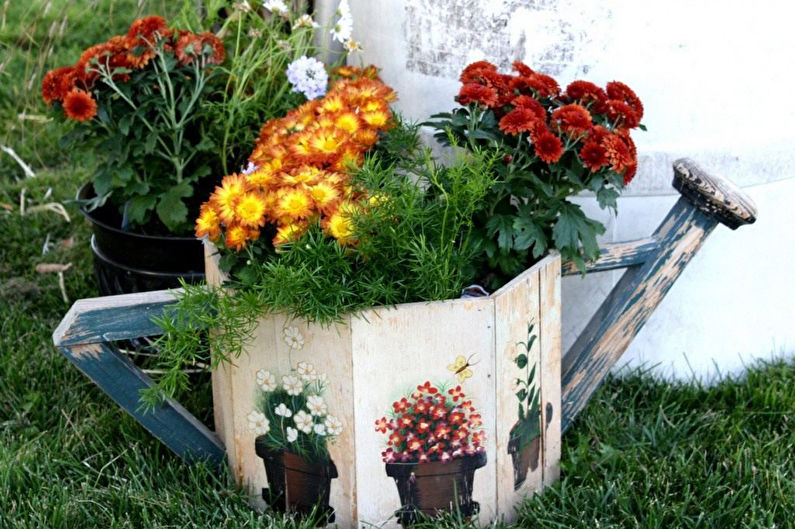
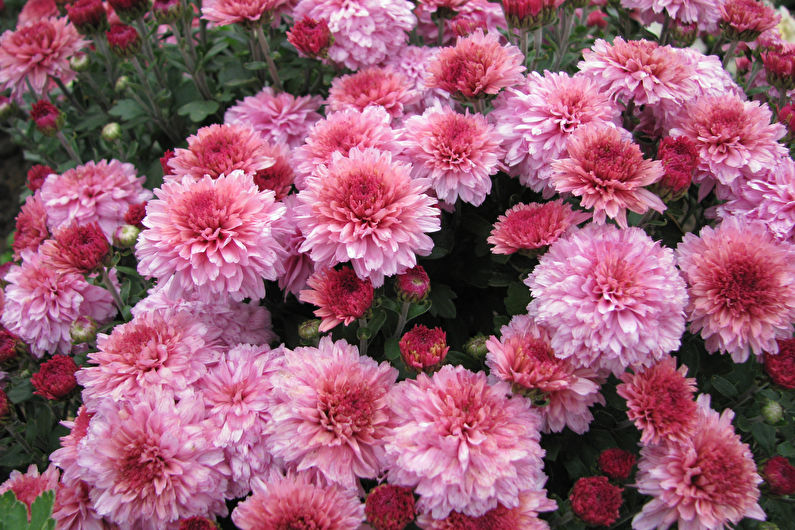
Classification of Chrysanthemums
It is unlikely that there will be a garden plant that could boast the same number of varieties as chrysanthemums. The color of these late flowers competes with the fall itself, with its magnificent reddish-golden palette.
Through the efforts of breeders, hundreds of unique varieties of yellow, orange, lime, snow-white, dark red, raspberry, purple, pinkish shades have been bred. In shape, they are chamomile (single-row), two-row, spherical, anemone, terry and semi-double. Each type of chrysanthemum has excellent decorative qualities, and by combining different varieties in landscape design or floristry, you can create truly charming compositions.
By the timing of flowering, early ones are distinguished, which begin to unfold from the beginning of August to the end of September; blooming in October - medium; and late November chrysanthemums. When choosing planting material, you should also focus on the climate and growing conditions - in cold regions, early flowers may be somewhat late with development, and later flowers simply will not have time to grow before snowfall.
Depending on the height of the plant, low, medium and high varieties of chrysanthemums are distinguished. The former are often used to create bright borders and paths, since they are characterized by a special splendor of the bush and numerous small inflorescences. Medium species are grown for landscape gardening, as well as for cuts for bouquets. The diameter of the flowers in them is from 4 (chamomile) to 7.5 cm (double), height - 35-50 cm. High chrysanthemums can reach 1.5 m, but because of the thin stem and large heavy inflorescences they need support. For this reason, these varieties are usually planted along buildings or hedges.
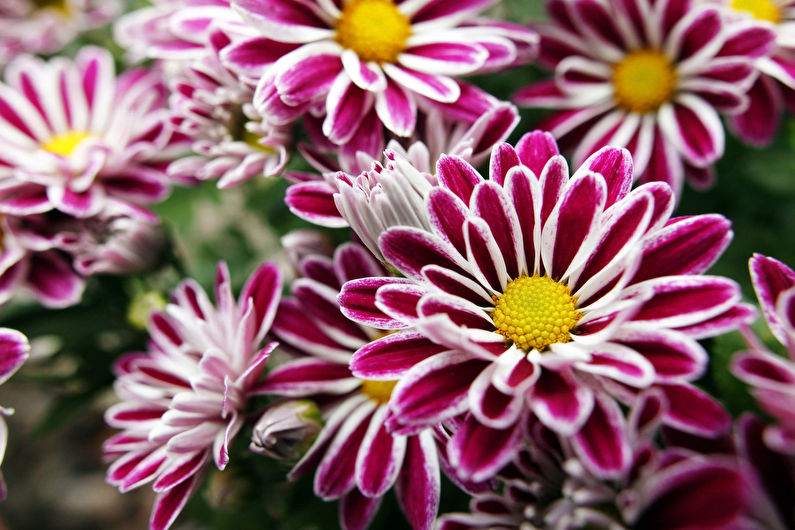
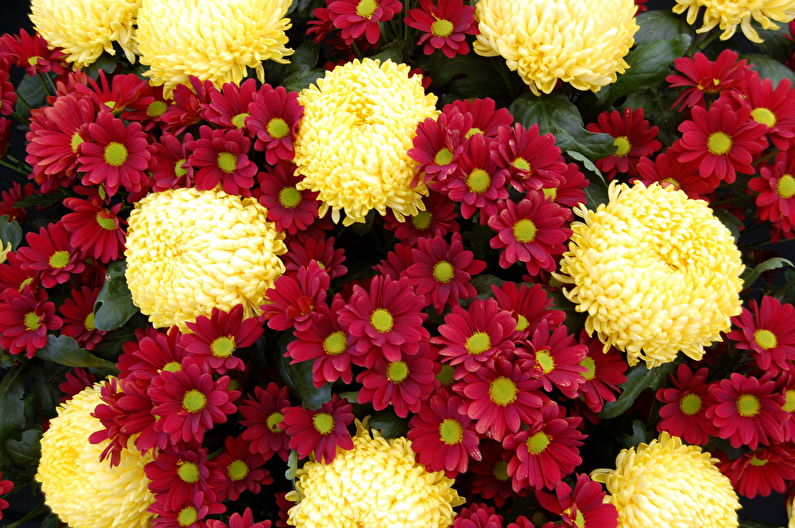
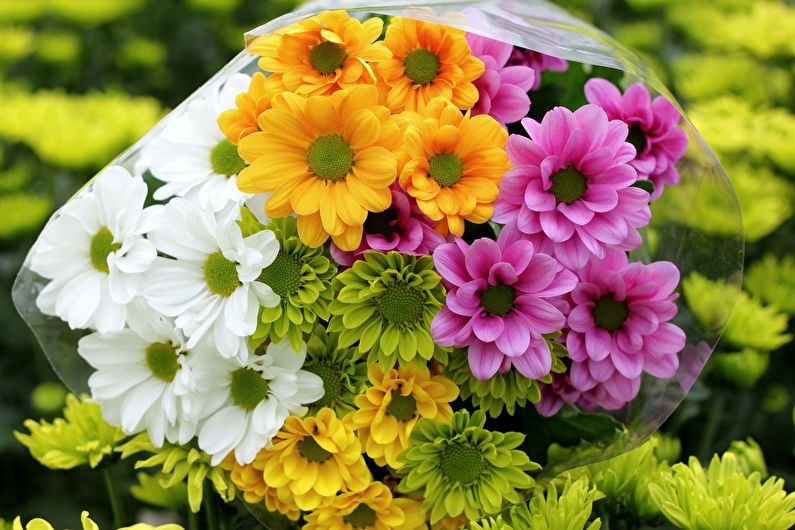
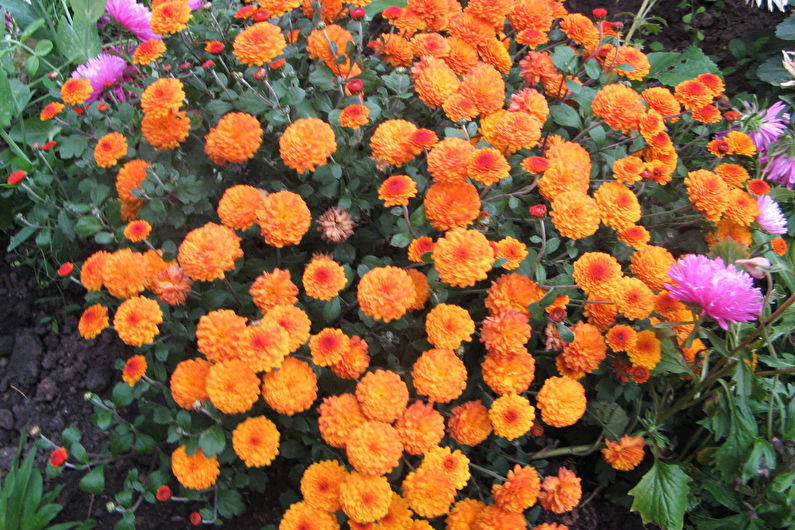
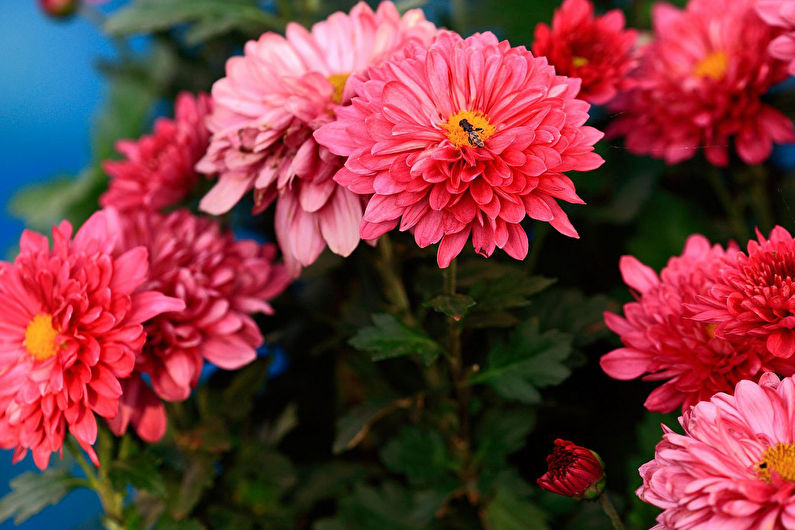
Reproduction and transplanting of chrysanthemums
With a few exceptions, almost all varieties of chrysanthemums belong to perennial plants and bloom in the same place for 3-4 years in a row. They are grown from seeds by seedlings, or sown directly on flower beds. Sowing in open ground is carried out in May, when the threat of frost disappears, 2-3 seeds at a distance of 30-50 cm. The holes should be poured with warm water and covered with a film until seedlings appear.After that, the film is removed, the soil is cleaned of weeds and loosening is carried out. After 10 days, the sprouts are fed with nitrogen fertilizer, following the instructions on the package of the drug. When the stems reach 10-12 cm, the excess can be moved to another place. In the case of seedlings, almost the same scheme is used, only seeds should be sown earlier, in late March - early April, providing them with full lighting and a temperature not lower than + 15-18C.
A simpler option for the propagation of chrysanthemums is the cuttings and division of bushes, which can be carried out in autumn or spring. For cuttings from the root, the shoot is cut 6-7 cm long, just above the leaf with a kidney. Then the lower part of the shank is moistened in a growth stimulator and at an angle of 35-45 degrees, they are planted in moistened soil, warmed up to 15-18C. The first roots on the sprout will appear in 2-3 weeks, after which it can be transplanted to a permanent place - in a pot or on a flower bed.
Bushes should be divided as soon as they become too thick or grow in one place for more than 2 years. For this, chrysanthemums are carefully dug up, divided into several parts together with the roots and planted in new areas, moistening and tamping the earth around well.
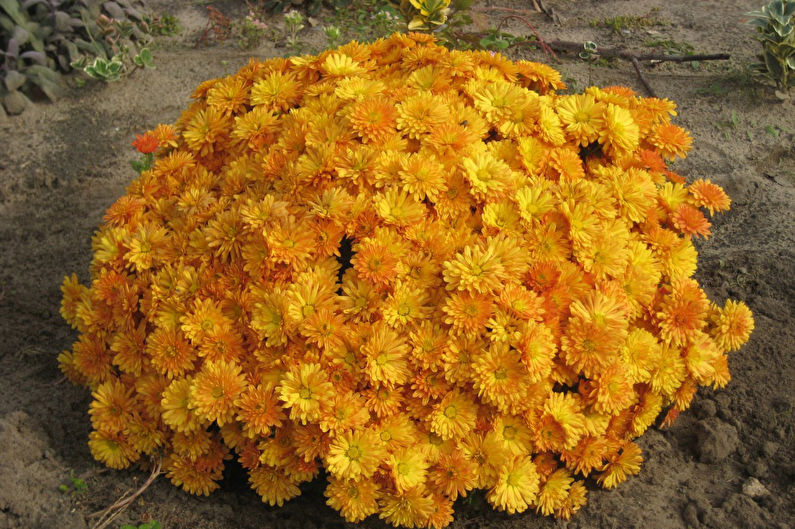
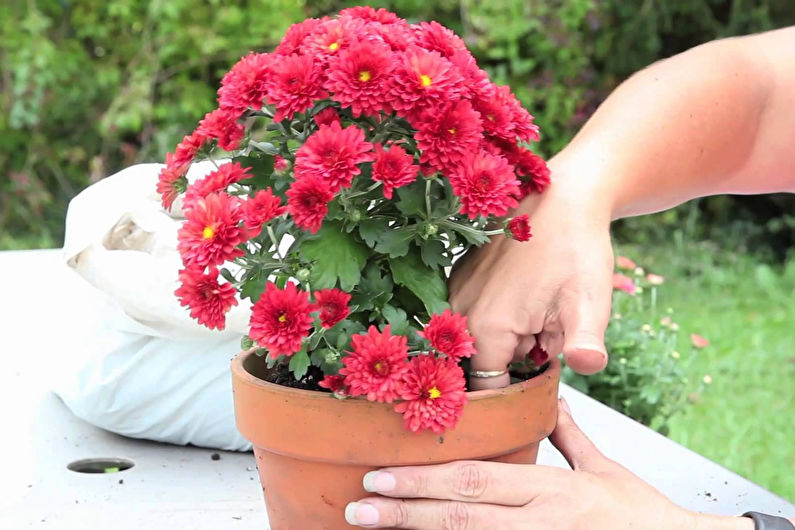
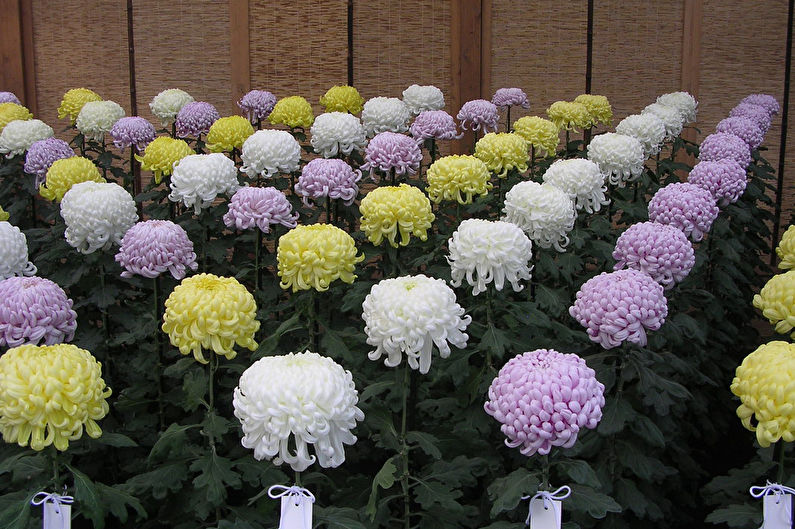
How to care for chrysanthemums
Chrysanthemum, or as it is also called, the flower of the sun is a light and moisture-loving plant. Of course, it takes root even in adverse conditions, but in order to get really beautiful inflorescences, it is necessary to provide a comfortable climate and attentive care.
When choosing a site for planting chrysanthemums, one should give preference to well-lit elevations that are closed from the wind. A swampy or too shady area is absolutely unsuitable - there the plant will rot and die quickly.
The soil for chrysanthemums is neutral or slightly acidic. Black earth is ideal, but sandy and clay soils should be improved by adding humus or vermicompost. Fresh manure in this case will not work - it can “burn” the plant.
Fertilizers are added in two stages. In early summer - 6-8 weeks after planting - it should be ammonia nitrogen, which contributes to the growth of green mass. It should be diluted with water and watered under the root the day after the rain. As necessary, the bushes can be fed a small amount of organic matter - a rotten bird droppings or mullein. For more magnificent flowering during the setting of buds, phosphorus-potassium fertilizers are applied, also in the form of an aqueous solution.
Regular watering is extremely important to preserve the decorativeness of the flower. It must be generous so that the soil is sufficiently moist throughout the growing season. In order to avoid root decay, it is often necessary to loosen and ensure their natural aeration. Mulching with straw, sawdust, dry leaves and other similar organics will help reduce the number of weeds in the flowerbed. They can also plant plants for the winter, protecting against frost.
Pruning chrysanthemums is carried out to form a beautiful bush. Short and branched varieties pinch after the appearance of the 8th leaf - due to this, more branches and flowers grow, the correct roundness appears. Medium and tall species are pruned as necessary, sometimes several times per season. Removing dried flowers has a beneficial effect on chrysanthemums - this procedure stimulates the appearance of new buds.

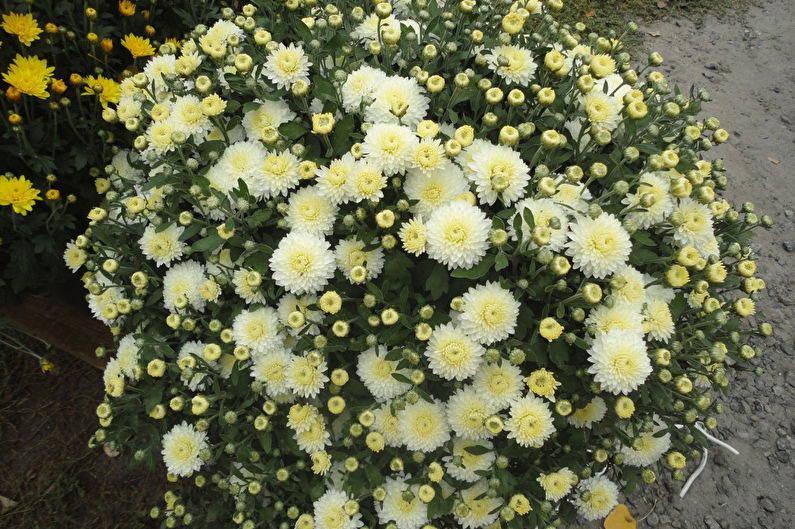
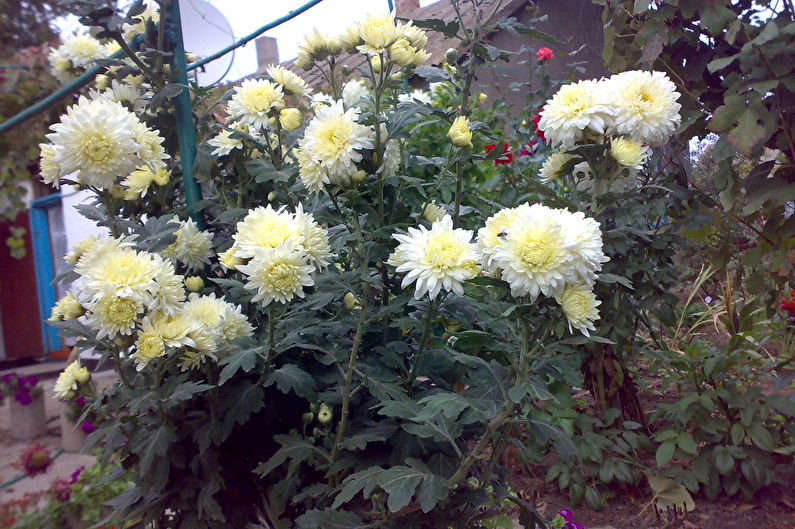
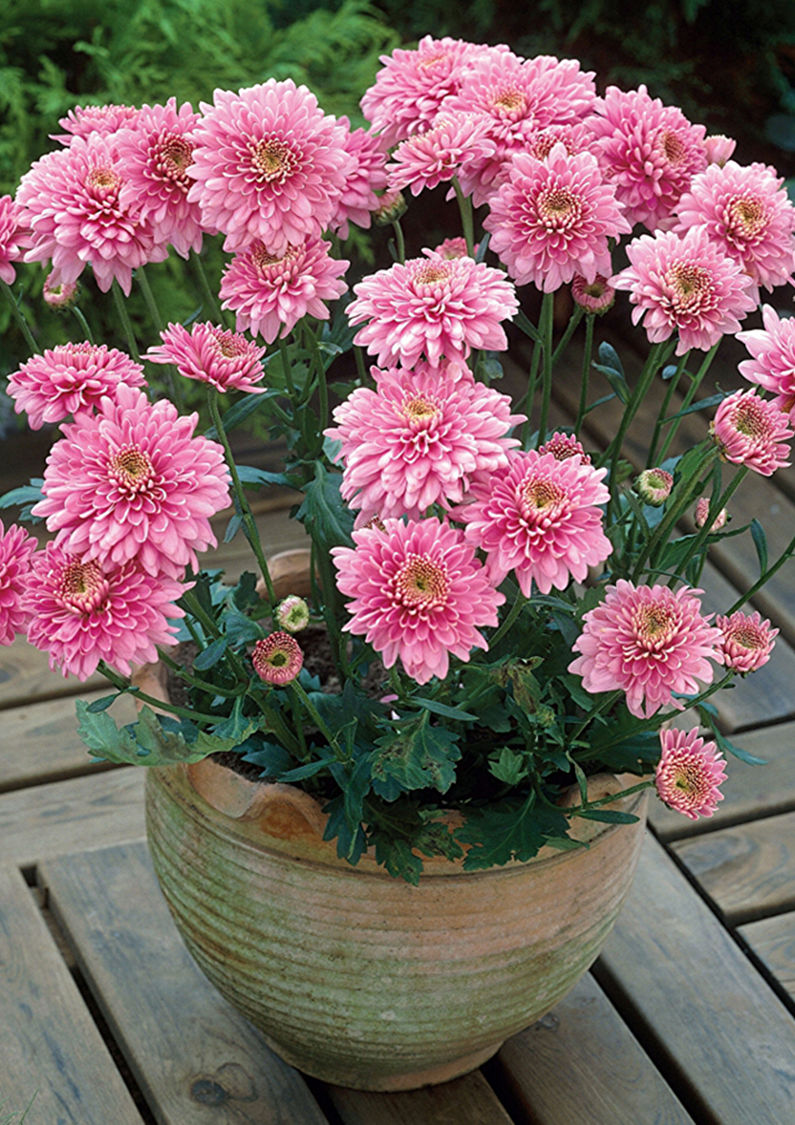
Pest and Disease Control
Under the right conditions, the risk of chrysanthemum disease or the appearance of pests on them is practically absent. If any conditions regarding light, temperature, humidity, air access are violated - problems arise.
Of the insects, chrysanthemums can damage nematodes (identified behind dark mosaic spots), meadow bugs and aphids (white sticky colonies on the underside of leaves and buds). For the prevention of nematodes and meadow bugs, the bushes during transplantation are treated with a solution of phosphamide, and the soil with formalin.Aphids can be destroyed by spraying chrysanthemum with Actara or Actellic with a solution of laundry soap.
Fungal diseases, such as powdery mildew, gray rot, verticillin wilt and rust, appear due to non-compliance with the rules of agricultural technology, waterlogging and low temperatures. In such cases, it is advisable to transplant chrysanthemums to warmer areas, and for treatment it is recommended to use preparations based on copper - Bordeaux liquid, copper chloroxide, copper-soap emulsion. Colloidal sulfur will help to destroy rust on the leaves.
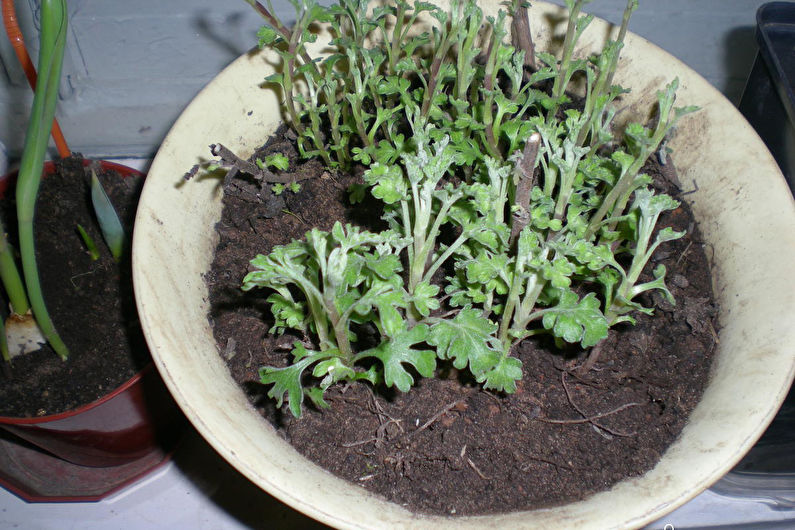
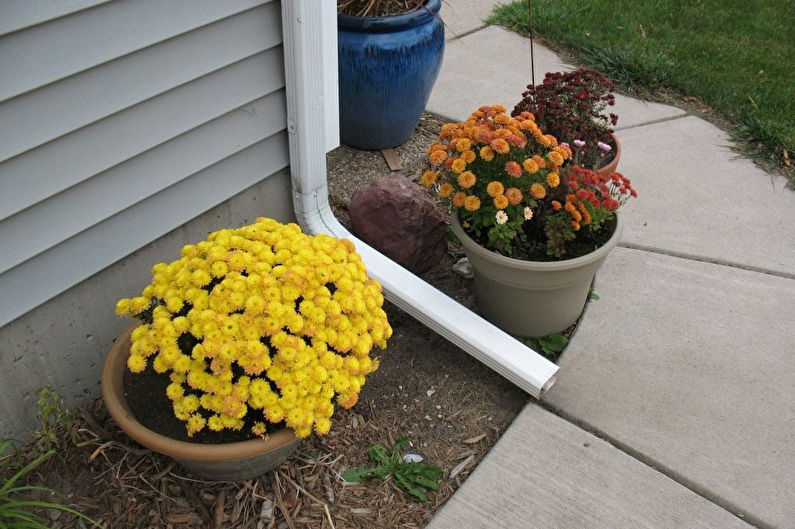
Chrysanthemums - photo
If the theoretical part about planting or caring for chrysanthemums can be presented in verbal form, then their beauty is difficult to describe in words. To demonstrate the visual variety of flowers and plant shapes, we created a colorful selection of photographs. Enjoy watching!
